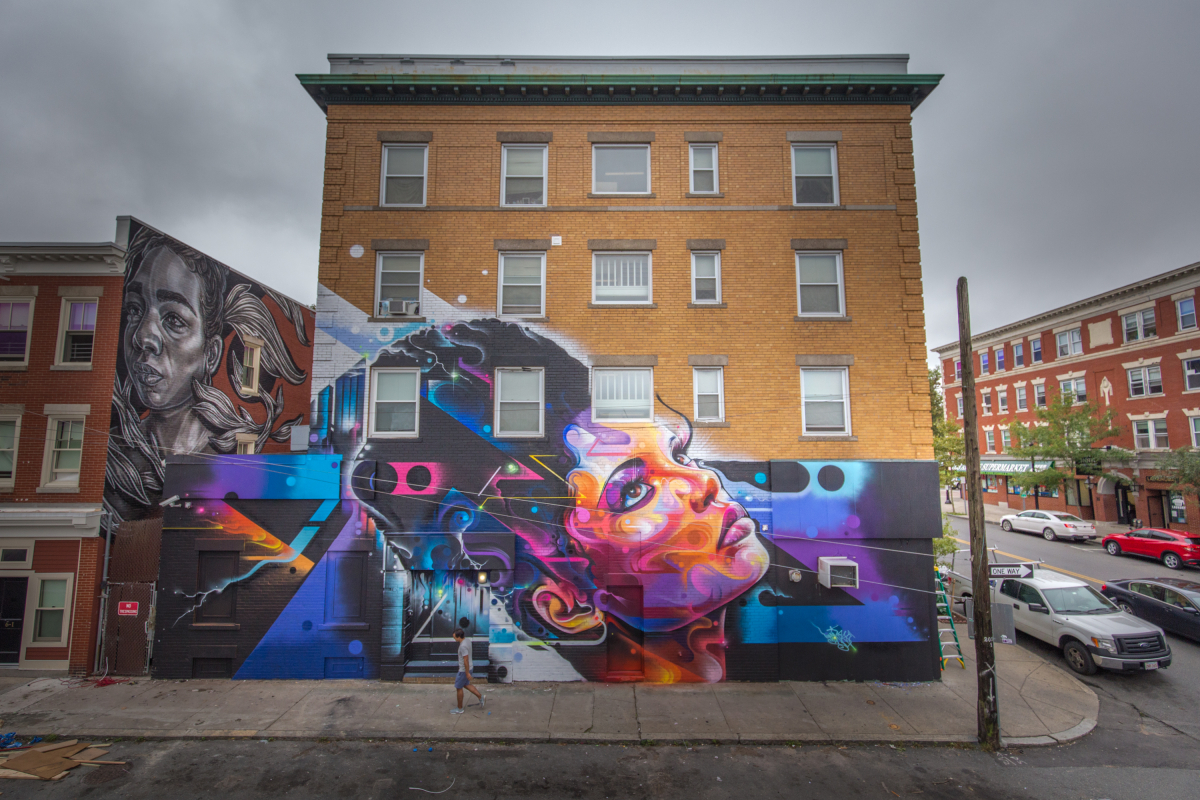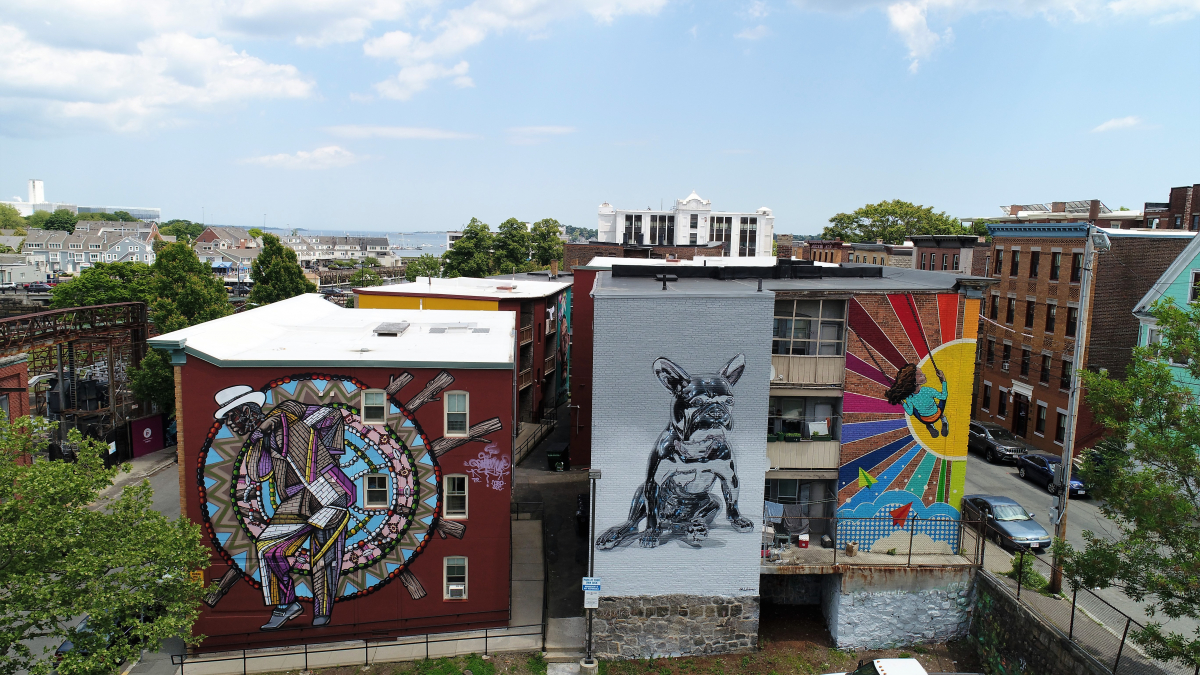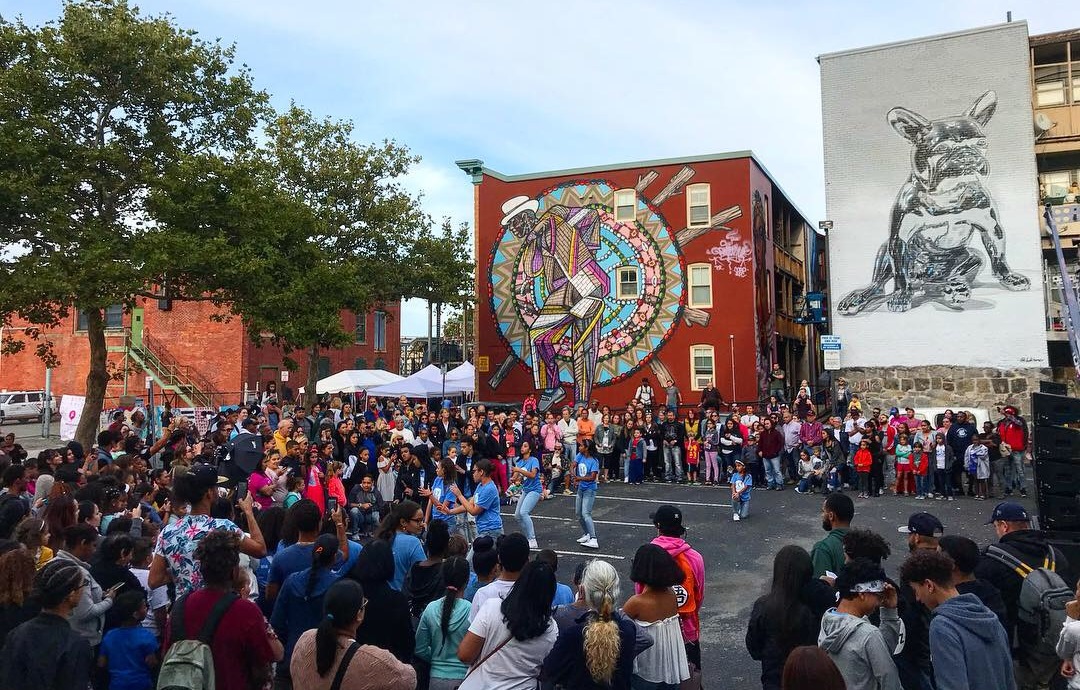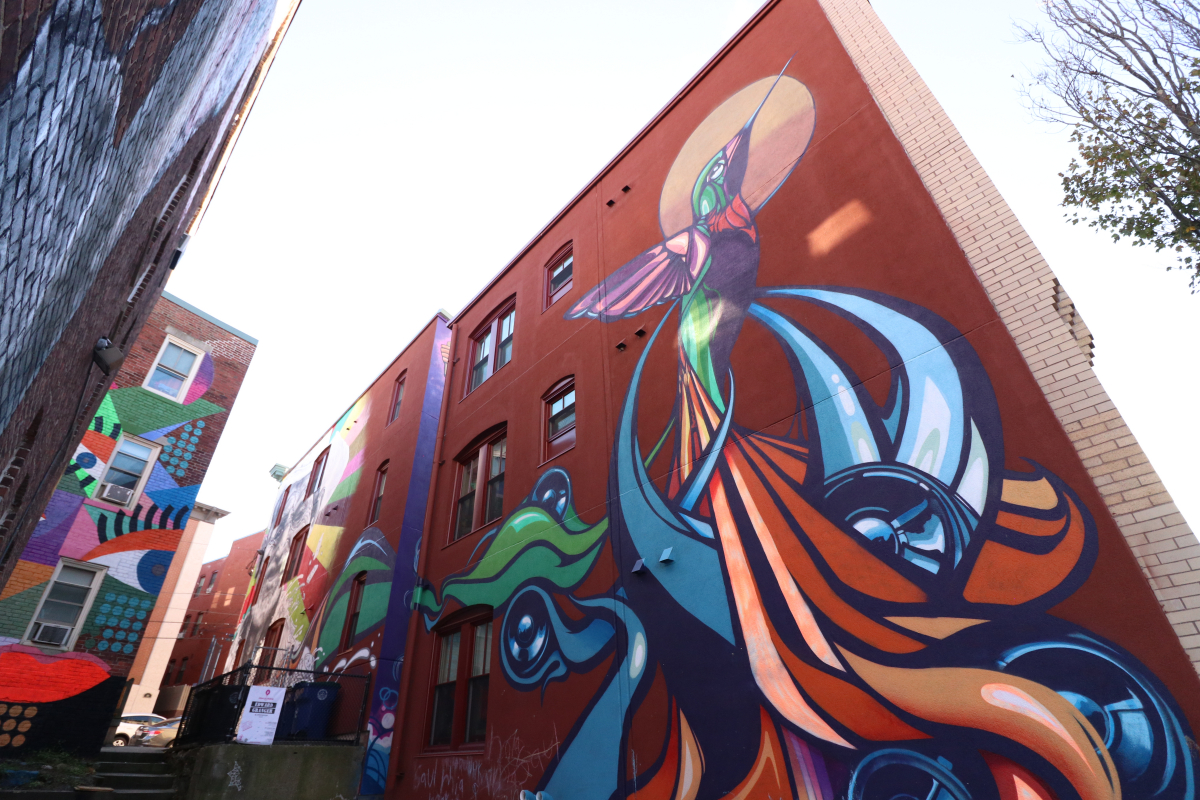Can public art be used equitably?
Posted by Nov 21, 2018

Mickey Northcutt
The benefits of public art are plentiful: inspiration, engagement, revitalization, economic development, beauty. Public art has all too often been directly associated with the displacement of families and individuals when used as an economic development tool in historically low-income communities without proper protections in place against displacement. With a well-thought-out anti-displacement strategy in place, public art can be transformative for historically low-income neighborhoods everywhere.
The Punto Urban Art Museum (PUAM), a public art initiative founded by North Shore Community Development Corporation (NSCDC) in Salem, Massachusetts, is addressing this head on as we enter a third year of programming.
NSCDC has been based in the Point neighborhood in Salem for 40 years, founded as a community organizing initiative in a neighborhood that was and remains a predominantly low-income, majority-minority community adjacent to downtown Salem, a thriving small city just 13 miles north of Boston along Massachusetts’ North Shore. Always an immigrant community, residents of the Point have experienced deep stigma and social isolation for generations. The same was true when the neighborhood was largely home to Franco-American immigrants from Quebec as it is today as a Dominican and Caribbean enclave.
NSCDC, the Point Neighborhood Association, the City of Salem, and Metropolitan Area Planning Council (MAPC) undertook a year-long community planning process in 2013 which led to the creation of the Point Vision & Action Plan. This action plan laid out dozens of priorities driven by resident and business owner input from an award-winning community engagement process that engaged hundreds of people in the Point, all driven towards improving the quality of life. This plan identified the reduction of stigma as one of the highest priorities. The negative portrayals of the Point and its population was seen as detrimental to young people especially, and as driving a wedge between the neighborhood and everywhere else. The negative stigma simply didn’t match the reality on the ground: the Point is a welcoming, family-friendly neighborhood.
After seeing increased levels of engagement when utilizing arts and creativity in our community organizing work and in a temporary pilot mural project, NSCDC began to take art and placemaking more seriously as a strategy to address the community priority of reducing stigma.
PUAM was launched in 2017, and after two seasons, residents and visitors can see 75 murals within a 3-block radius. Fifty percent of the artists invited were amongst the most talented in the world, while the other 50% were local artists, with a priority for Point and Salem-based artists.
The results? Dramatic.

The project has brought an onslaught of positive media coverage to the Point neighborhood, with positive mentions in local and international acclaimed news media such as The Boston Globe, Juxtapoz magazine, New England Design magazine, the Peabody-Essex Museum member newsletter, and more.
The Point has finally connected to Salem’s thriving tourist economy. Destination Salem, the official local tourism authority, highlighted PUAM in their 350,000+ print annual guidebook to Salem, driving thousands of visitors from around the world to the Point for with many visiting for the first time. Small business owners in the Point report a significant increase in foot traffic with a measurable impact on their businesses’ bottom line.
The project has bridged partnerships between the Point and some of the North Shore’s strongest institutions. The world renowned, Salem-based Peabody-Essex Museum has embraced the project as an advisory and commissioned an instillation in an NSCDC-developed pocket park in the heart of the Point neighborhood—a remarkable example of inclusive investment reflecting PEM’s priority as an institution of advancing equity.
Our staff have been stopped on the street more times than we can count by people who say their perspective toward the Point has changed for the better. Our community development partners know that this isn’t something we expect during the normal course of our work.
![]()
What Makes PUAM special?
PUAM has established a simple model for leveraging public art to benefit low-income neighborhoods in an equitable way that doesn’t equal displacement.
PUAM is ultimately governed by NSCDC’s Board of Directors, whose by-laws provide that one-third of the directors be low-income or live in a low-income census tract served by NSCDC. Residents and small business owners in the Point have a seat at the table when the organization’s priorities are set.
All of the public art in PUAM is on properties which are either permanently deed-restricted as affordable housing (rent controlled), are public properties, or non-residential sites.
The priority placed on opportunities for local artists sets PUAM apart from many of the mural programs around the United States. In addition, NSCDC will build upon this with entrepreneurship training for local artists beginning in 2019.
The impact of PUAM will always come back to improving the quality of life for families in the Point. A favorite anecdote shared with our staff by a group of parents living in NSCDC-owned properties with murals on them was that the parents’ children now give directions to each others’ homes by referencing which mural dots their building. One such parent said with a smile, “My son proudly tells his teachers that he lives in the building with the mockingbird on it, and that his aunt lives in the building with the farmer on it. He loves his neighborhood!”








